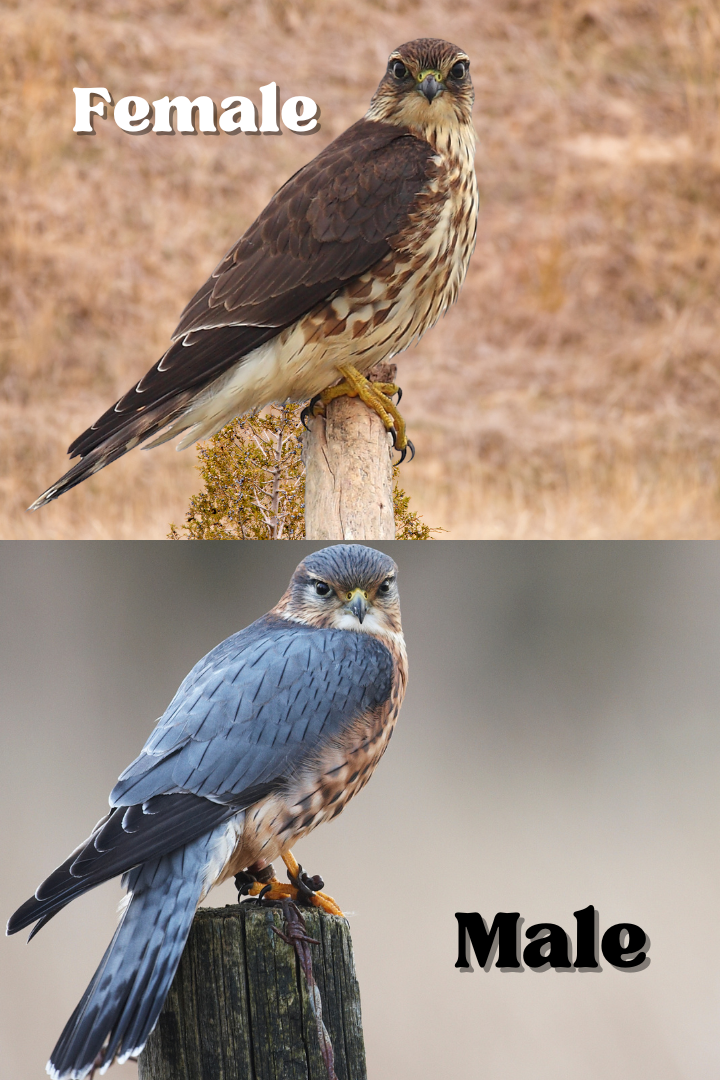
Merlin
Scientific Name
Falco columbarius
Identifying Characteristics
Slightly larger than kestrels, merlins appear uniformly dark in the field. Males are brighter than females, with slate blue wings and back, dark head, and dull facial markings. The underside is rufous with dark streaks. The tail is slate gray with a dark terminal band. Females are uniformly brown with light, brown streaked undersides. Immatures resemble the female.
Range
Merlins are found worldwide, breeding in the northern latitudes and migrating south into Mexico and South America, the Mediterranean, the Middle East, and southern China.
Habitat
Nests are found in forests or scrublands that are broken up by open areas, where the birds hunt. In Minnesota, they can be found in the northern forested part of the state as well as urban areas, including the Twin Cities.
Nesting
Like other falcons, merlins do not build their own nests, but instead use the old stick nests of crows or magpies. Up to five eggs may be laid and incubated by the female. The young remain together after fledging and may migrate south together.
Feeding Habits
Merlins feed primarily on small to medium-sized birds, but will take insects, rodents, and small lizards. They have been known to take birds as large as pigeons, but more often they take small passerines or shorebirds weighing less than 50 grams.
Raptor Center Data
As the Minnesota urban breeding population grows, the clinic admits 20-25 merlins each year. Most often, they suffer with traumatic injuries.
Conservation Notes
The merlin is not afforded any special status.